Writing in science – exposing and extending
This blog is part of a sequence of blogs – a symposium – on writing in science coordinated by Pritesh Raichura. Pritesh started the sequence in his post (here).
- Ben’s post on ‘Characteristics of Science Vocabulary and Some Classroom Tools’ is here
- Ruth’s post ‘Sentences and the Web of Knowledge’ is here and
- Tarjinder’s post ‘Writing Revolution Activities in Primary Science’ is here.
How many languages do you speak? I speak two; English and Science.
It’s strange to think of science as a language, but it is. Try explaining Born Haber cycles to an English speaker who doesn’t understand the language of ions, atoms, bonding and enthalpy and you won’t get very far. Science is a system of communication, dedicated to explaining the material world: why men have nipples, how aeroplanes planes fly and why cigarettes give you cancer. To answer these questions we need words such as mass, weight, selection and force that carry precise meanings (semantics) that scientists share. We can then take these scientific words, or bits of knowledge, assemble them together with other words to create meaning.
Misunderstandings in science
The problem with making meaning (understanding) is it often goes wrong.
I recently asked my nephew and nieces whether water poured onto a table would still be there in the morning. They all said that ‘no it wouldn’t’. ‘So why wouldn’t the water be there tomorrow’ I asked? And this is what they said:
- Nephew A: ‘the sun will make it go up’
- Niece B: ‘it will soak into the table’
- Niece C: ‘someone will come and wipe it up’
Despite all arriving at the correct answer, their reasoning was very different. Science teachers face this issue all the time. Metals conduct electricity because ions move. Metals expand when heated because the particles get bigger – AGH! Sometimes these non-scientific ideas are caused by misconceptions or form misconceptions, but sometimes they are just simple errors that are relatively easy to correct. The challenge then is to expose these wrong ideas, and to understand why students think them in the first place so that we can respond effectively. This is where writing can help.
The role of writing in science to reveal thinking
When we write we put down our thoughts onto paper by articulating both the ideas and the relationships between them. The more we write, the more we reveal about our own thinking. This is exciting because whilst there isn’t enough time to listen to everyone’s ideas, we can read their words.
The thinking-writing gap
But there’s a problem here. We are making the assumption that a piece of writing accurately reflects what a student thinks. We know, however, that many students can talk about a scientific idea far better than they can write about it (Warwick et al., 2003). This means that if we are going to use writing as a forum for diagnosis and feedback, we need to be explicit at helping students to organise and communicate their ideas better.
Ben and Ruth have written elsewhere about ways to teach vocabulary and how to help students to articulate relationships between knowledge at the sentence level. Deploying these ideas will help students to articulate what they are thinking and talking about. But there is one more writing tool I want to add to our arsenal – context maps.
Context maps to get us organised
When we create meaning from knowledge we link related ideas together; Ruth calls this the web of knowledge. Let’s say we are interested in understanding how acid affects enzymes. To understand this idea we must know lots of knowledge and we need to know how this knowledge is related: it is no good knowing that proteins are denatured by acid unless you also recognise enzymes are proteins. A better understanding may go one step further, relating low pH to a higher hydrogen ion concentration, and that these hydrogen ions bind to amino acids within the protein molecule disrupting the bonding that confers enzyme shape. The deeper the understanding the more extensive and abstracted this knowledge hierarchy becomes. It is this hierarchy that writing is so good at exposing.
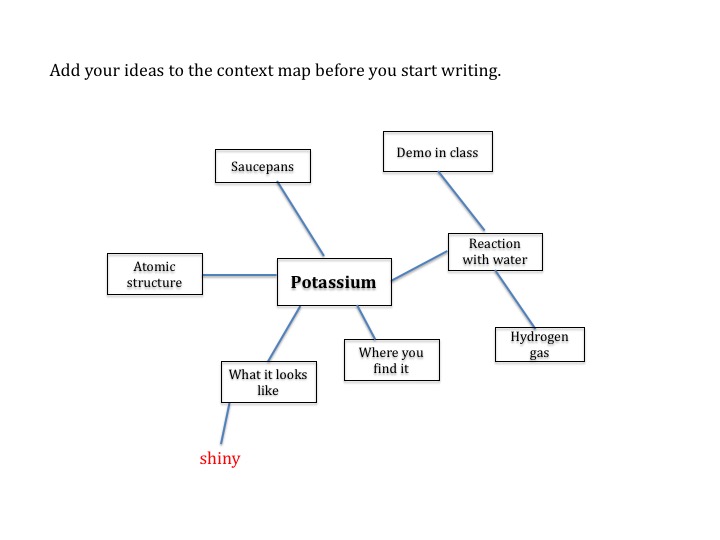
But constructing an understanding of enzyme action goes beyond linking these scientific ideas. We also bring forward other perspectives to create understanding. We use episodic knowledge – memories of a time when we saw lemon juice squeezed onto fruit salad to stop bananas browning. We use analogies, such as the lock and key model, and we have beliefs, often wrong ones, such as enzymes being alive! All of these ideas comprise something called “contexts of meaning” (Bloom, 1990) and it is the corresponding framework that ultimately defines how and what a person understands.
So when we ask students to write about scientific ideas we need to explore all of their contexts of meaning as some of these perspectives are responsible for misunderstandings e.g. enzymes are alive and so can be killed by heat.
Context maps are a tool that can help. They are similar to concept maps in that a stimulus word or phrase is written in the centre of the page, but they aren’t just interested in capturing the formal scientific knowledge. Traditionally context maps impose minimal structure on students, but providing some level of organisation during the drafting stages (see example here) helps students improve the quality and quantity of their writing (Patterson, 2001).
Can writing help learning? Time to ask the kids!
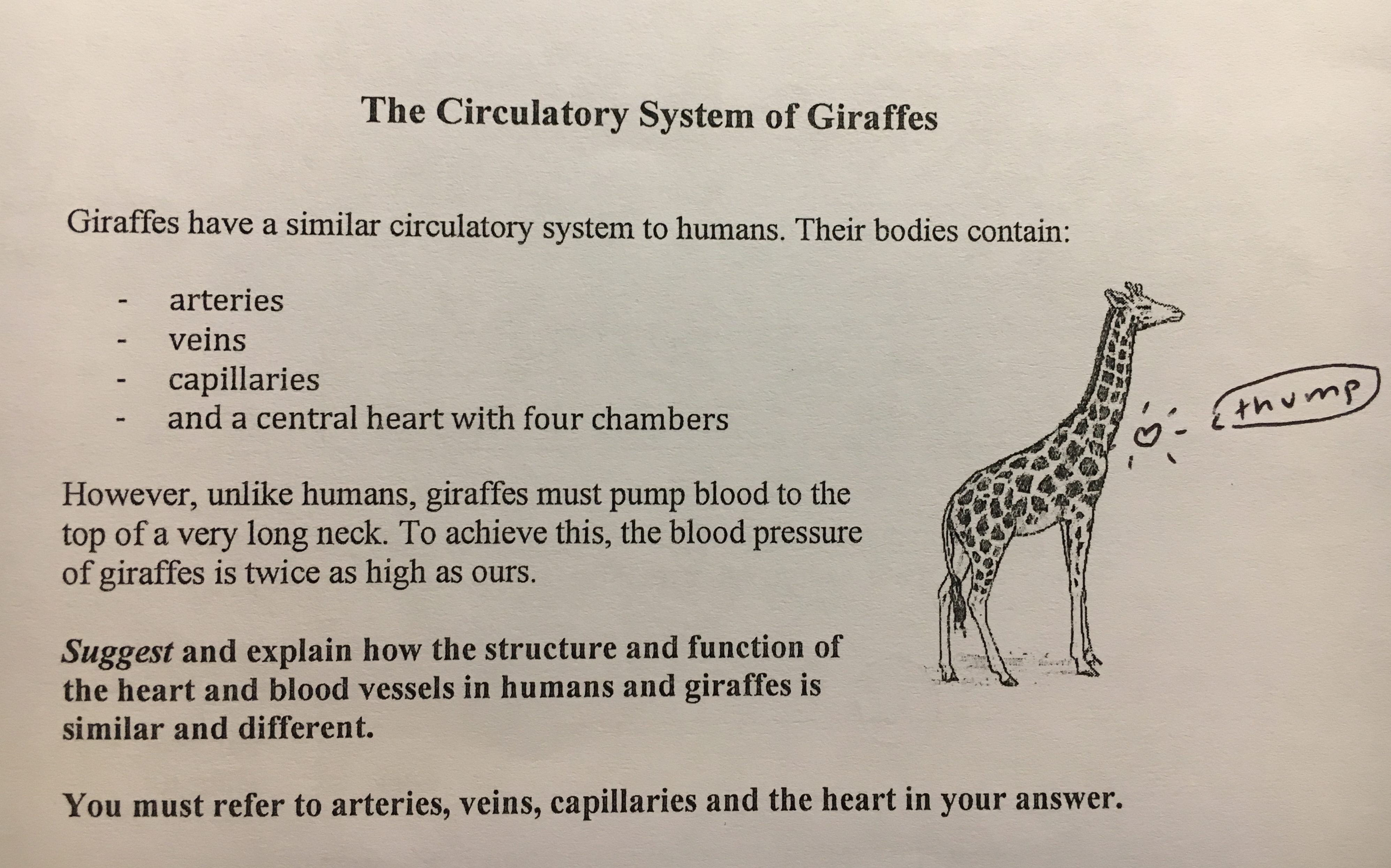
If a focus on words, sentences and context maps can support students to write more and better, is it possible that we can use writing to help students develop their conceptual understanding as opposed to simply reveal it?
This proposition got me exited, and so it was time to investigate!
In a rather unscientific study, 28 Year 10 students (all girls) from one school completed a writing task to compare the circulatory systems of giraffes with humans. You can access the writing task here. Students had time to organise their ideas on a simple context map before they started writing. Once students had finished, but before teacher feedback, they completed an anonymous questionnaire scoring each statement between – 1 (strongly disagree) and 5 (strongly agree). Results are below.
Student responses to questionnaire following the writing task
| Statement | Mean score /5 | Agree or strongly agree (%) | Disagree or strongly disagree (%) |
| I enjoyed thinking about the question. | 4 | 64 | 11 |
| I enjoyed writing about the question. | 3 | 36 | 14 |
| Writing about this question has helped to me to organise my ideas better. | 4 | 68 | 7 |
| Writing about this question has helped to me to improve my understanding. | 3 | 57 | 25 |
More students enjoyed thinking about the question than writing about it – this may well change as their confidence and ability to write develops. The most revealing data though was found within the writing. I have captured some of the highlights below.
Evidence of understanding shown in the writing task
- “giraffes have larger hearts because they need to pump more blood as they are bigger than humans”
- “blood pressure is higher in the giraffe as blood needs to travel up the high neck, against gravity”
- “valves are stronger in giraffes as they have long necks so the blood might flow backwards”
- “a larger heart will pump more blood by generating more force”
Misunderstandings shown in the writing task
- “humans and giraffes need a double circulatory system as they need blood to be pumped to their heads and body”
- “the heart pumps oxygen and carbon dioxide in and out of the body”
- “arteries are thicker to be able to withstand high pressure”
- “giraffes breath in more carbon dioxide than humans”
There is plenty of evidence here that we diagnosed some pretty important misunderstandings. Many students think, for example, that the function of the double circulatory system is to pump blood from the heart to the head and from the heart to the body. It was also interesting to see what knowledge was not included – very few students mentioned the role of heart rate in generating pressure.
For some errors it was difficult to work out if they were conceptual, or simply an inability of students to communicate their ideas through writing. Take statement three:
“arteries are thicker to be able to withstand high pressure”
Does this student understand that the muscular wall of arteries is thicker in giraffes, or do they just think giraffes have wider arteries? There were many errors like this where a superficially correct sentence was lacking necessary precision. It would be interesting to see how these students would vote if given a multiple choice question presenting both options.
Writing for organisation
During the process of writing this post I have developed my understanding of writing in science. It was interesting then to see that for many students (68%), writing also helped them to organise their ideas better. Bereiter and Scardamalia (1987) describe this as the ‘knowledge transforming model’. When experts write they are not simply putting words onto the page i.e. knowledge telling, they are instead participating in a process of knowledge development and knowledge expression. The challenge with knowledge transformation as opposed to knowledge telling is that it places significant demands on working memory (Deane et al., 2008). So, if we are going to get students to write for knowledge transformation we are going to need to support them by ensuring they:
- have sufficient topic specific knowledge – SLOP helps here
- have time to discuss ideas before they write
- have explicit sentence level support in how to construct sentences e.g. use of connectives
- have time to organise ideas using context maps – so drafting is separated from writing
- are clear on the purpose and audience of the writing
- have time to evaluate what they have written
Review and respond
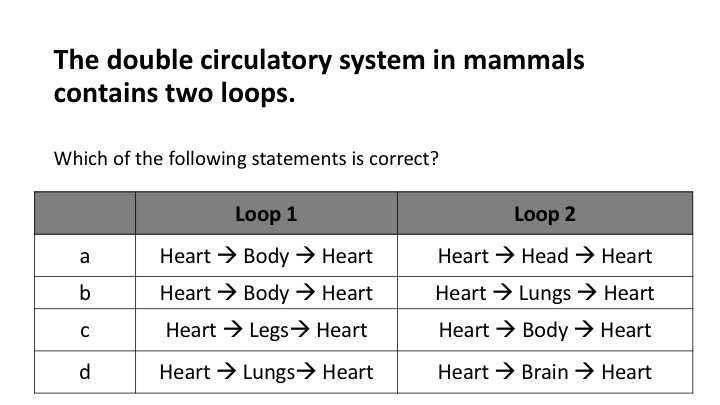 Of course there is a cost. Marking written work can take an extortionate amount of time; but it doesn’t have to be this way. You could just read the answers and capture whole class errors and misconceptions or instead mark ten examples, from a range of students, and alternate these students throughout the year. Other ideas on written feedback are here. Once you have analysed the data, it’s time to respond. A quick Do Now targeting silly, common mistakes at the start of the next lesson is a good place to start – MCQs or spot the error are useful. Then, some direct instruction at the board, or a demonstration to clarify the correct science before targeting common misconceptions and writing errors. Celebrate examples of great student work and provide time for students to implement the feedback through questions or re-drafting specific aspects of the work e.g. a paragraph comparing and explaining differences in heart rate of giraffes and humans.
Of course there is a cost. Marking written work can take an extortionate amount of time; but it doesn’t have to be this way. You could just read the answers and capture whole class errors and misconceptions or instead mark ten examples, from a range of students, and alternate these students throughout the year. Other ideas on written feedback are here. Once you have analysed the data, it’s time to respond. A quick Do Now targeting silly, common mistakes at the start of the next lesson is a good place to start – MCQs or spot the error are useful. Then, some direct instruction at the board, or a demonstration to clarify the correct science before targeting common misconceptions and writing errors. Celebrate examples of great student work and provide time for students to implement the feedback through questions or re-drafting specific aspects of the work e.g. a paragraph comparing and explaining differences in heart rate of giraffes and humans.
Types of writing tasks
For those of you who are keen to trial some writing tasks in your classroom ideas are at the bottom of this page. Some scaffolding is provided, but give additional sentence level support to minimise the thinking-writing gap. These tasks will be most successful when the necessary writing skills are fully embedded and sequenced in the curriculum.
All tasks provide an opportunity for students to expose and extend their thinking so that teachers can provide feedback. Many of these tasks use a context that facilitates understanding and sparks interest – remember, “content is king but context is God!” Sometimes this context has a dash of fantasy, such as the Green Child who can photosynthesise – this allows us to ask diagnostic questions that would never be tolerated in the ‘real world’.
A final note
Have fun with writing in science. It provides a unique opportunity to explore what students are thinking and provides clues as to why they are thinking it. But more than that, the process of writing helps students to organise and develop their own ideas so writing is a tool to expose and extend conceptual understanding. What’s important is that we design tasks that motivate students to think about the right things, and provide explicit instruction in how to draft ideas and craft sentences so that students can express more of what they are thinking and talking about.
Ideas to try in your classroom
Thanks
Thanks to Sian Clyburn for help with the writing task, and to Pritesh and Ruth for feedback that made me think.
Further reading
- Bereiter, C., & Scardamalia, M. (1987). The psychology of written composition. Hillsdale, NJ: Lawrence Erlbaum.
- Bloom, J. W. (1990). Contexts of meaning: Young children’s understanding of biological phenomena. International Journal of Science Education, 12(5), 549-561.
- Deane, P., Odendahl, N., Quinlan, T., Fowles, M., Welsh, C., & Bivens-Tatum, J. (2008). Cognitive models of writing: Writing proficiency as a complex integrated skill. Princeton, NJ: ETS.
- Hochman, J.C. and Wexler, N. (2007) The Writing Revolution: A Guide to Advancing Thinking Through Writing in All Subjects and Grades. Jossey-Bass.
- Patterson, E. W. (2001). Structuring the composition process in scientific writing. International Journal of Science Education, 23(1), 1-16.
- Warwick, P., P. Stephenson, and J. Webster (2003) . Developing pupils’ written expression of procedural understanding through the use of writing frames in science: Findings from a case study approach. International Journal of Science Education 25(2): 173–192.
- Wellington, J. and Osborne, J. (2001). Language and Literacy in Science Education. Open University Press.
- Dangers of starting with definitions
- Developing oracy for science
- Reading for meaning in science
- Writing in science

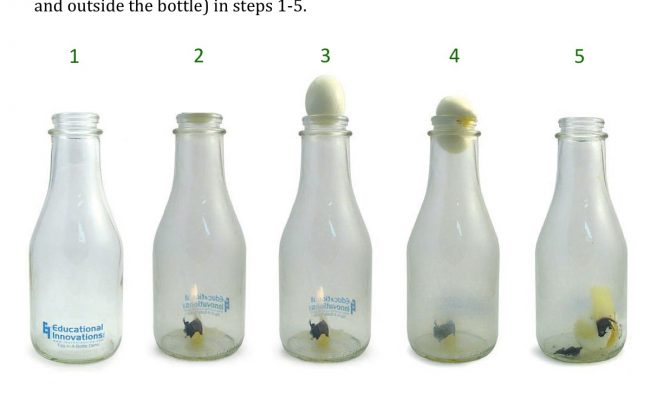
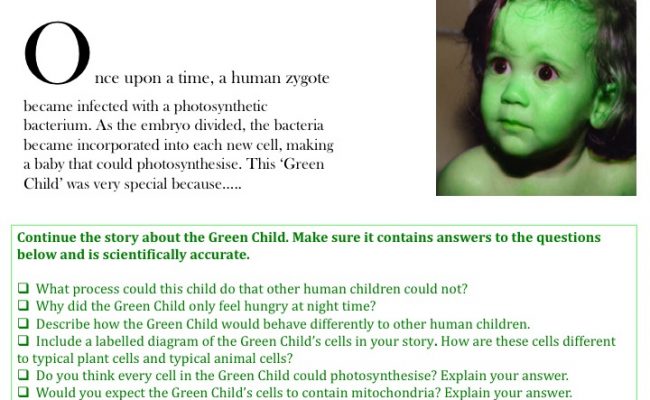
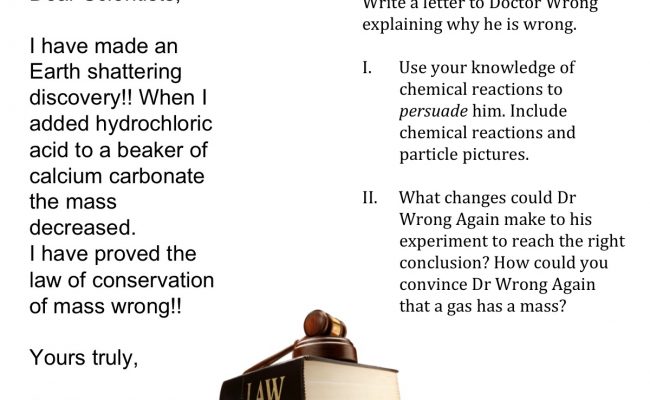
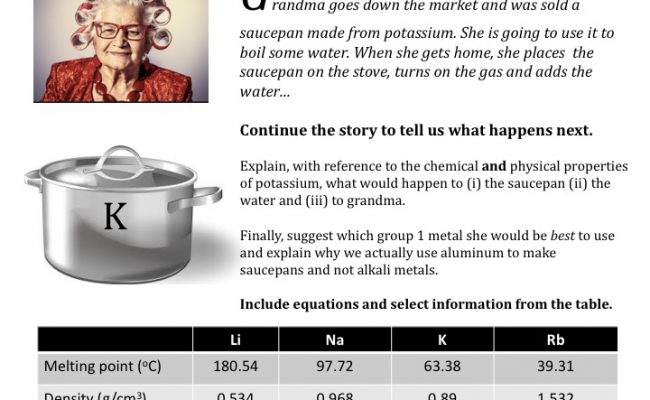
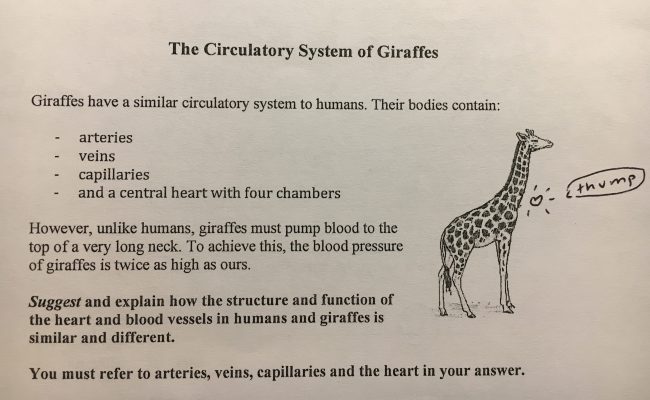
Hi, can i know the name of the author of this article. I find it interesting and would like to quote in my PGCE literature review assignment. especially the chloroplast child 😉
Dear Cheng,
I am so pleased that you have found the resources useful. There is some help on how to reference the science teacher here:
https://thescienceteacher.co.uk/about/
Best of luck with the assignment.
Jasper